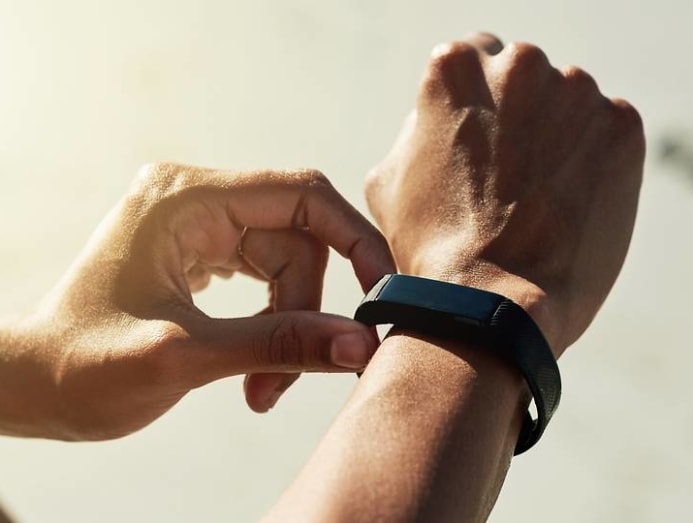How to lower cholesterol levels: Experts explain why your diet or exercise routine isn’t working
You've done everything to lose weight by going to the gym, avoiding wagyu beef and going on one of those trendy diets. Turns out, you might be sabotaging your efforts. Experts explain why it's backfiring on you.

(Photo: iStock/jarun011)
Cholesterol. You know it as the waxy fat or lipid that exists in your blood. High cholesterol levels are a cause for concern as they are an established risk factor for atherosclerosis (the thickening or hardening of the arteries) and coronary artery disease (the build-up of plaque in the arteries). Depending on where the cholesterol pools, it can also lead to stroke.
The gameplan is to keep your cholesterol levels as low as possible. But what if the opposite seems to be happening to you over the years?
You aren’t alone because the likelihood of dyslipidemia does increase with age. It is a condition referring to the unhealthy levels of one or more kinds of lipids in your blood (including high-density lipoprotein or HDL; low-density lipoprotein or LDL; and triglycerides).
“Human beings are born with low cholesterol levels, which increase with age and eating habits,” said Professor Tan Huay Cheem, a senior consultant with the Department of Cardiology at National University Heart Centre, Singapore.

Take, for instance, the LDL or “bad” cholesterol level of newborns. It starts at between 30mg/dL and 70mg/dL but typically rises above 100mg/dL by age 20, added Prof Tan.
As a basis, the LDL level should be kept below 130mg/dL. However, the average LDL level among those newly diagnosed with high blood cholesterol in Singapore was 186mg/dL for 2019 to 2020, according to the recent National Population Health Survey 2019/2020.
THE CHOLESTEROL NUMBERS TO KEEP TO
It is recommended that you start screening for high cholesterol from the age of 40, said Dr Ian Phoon, a family physician and the clinical lead for the Cardiovascular Health Workgroup at SingHealth Polyclinics.
“However, start screening from age 30 if you have other risk factors such as a family history, obesity, associated diabetes and/or hypertension, sedentary lifestyle and a diet rich in saturated or trans fat,” he said.
Prof Tan goes even further and suggested screening from as young as 18 years of age if you have the above risk factors. “Patients who are born with genetically high cholesterol conditions (more on familial hypercholesterolemia later) can even develop coronary artery disease in their teenage years,” he explained.
On the whole, the Health Promotion Board recommends keeping your cholesterol numbers to the following:
| Total cholesterol | Less than 200mg/dL |
| HDL cholesterol | Greater than 40mg/dL |
| LDL cholesterol | Less than 130mg/dL |
| Triglycerides | Less than 150mg/dL |
You should consult a doctor if your LDL cholesterol level is higher than 160mg/dL, said Prof Tan.
WAYS YOU COULD BE SABOTAGING YOUR EFFORTS
Your body does need some cholesterol to be healthy. “It is an essential component of every cell in your body, giving cell membranes strength and flexibility,” said Prof Tan. “It plays important roles in the production of hormones, vitamin D and bile necessary for digesting fats.” Even so, you’ll only need less than 300mg a day as recommended by the Ministry of Health.
So when it comes to lowering your cholesterol levels, keeping your weight under control is likely your MO. You might follow a certain diet, eat less of certain foods and exercise more. You may even be put on statins (cholesterol-lowering medicines) by your doctor to help you manage.

But despite the efforts, the numbers aren’t quite coming down as you’d expect. What could be going wrong and how do you rectify it? Here’s a look:
- Following the keto diet to lose weight
The keto diet is a high fat, moderate protein and low carbohydrate diet, which can result in significant weight loss, especially among people with obesity, said Prof Tan.
He added: “However, the long-term health consequences of this diet are uncertain and there is no evidence to suggest that it improves cardiovascular health. Some people with genetically high triglyceride levels can even develop serious complications such as pancreatitis from high fat consumption”.
Furthermore, saturated fats are not restricted in the keto diet, which will likely increase the LDL level, said Dr Phoon. Saturated fats – found in foods including red meat, ghee and butter – are bad news as they increase LDL levels. But because carbs are omitted in the keto diet, you’ll need a substantial amount of fat to meet your daily energy needs, he said.

Not only that, being on such a restrictive diet may also mean a lack of fruit and vegetable intake, and along with it, a lack of vitamins, minerals and fibre, added Dr Phoon. “This may cause constipation and even piles. It is also difficult to maintain such a diet for the long term.”
- You think you’re fine by avoiding wagyu beef, pork belly and fried chicken
Yes, animal products such as fatty meat, organ meat, skin, seafood and full-fat dairy products are known sources of saturated fat. But here’s the thing: The bad fat is also present in trans fat (it is manufactured by adding hydrogen to vegetable oil to solidify it at room temperature) as well as coconut and palm oils, said Prof Tan.
Related:
And trans fat is pervasive; it can be found in myriad commercial foods ranging from bread to margarine, instant noodles, ice cream and frozen pizza.
“Singapore has banned the use of trans fat since June 2021,” said Prof Tan. But you might still come across some foods that contain it. Look out for “partially hydrogenated vegetable oil” in the ingredient list.

Restricting saturated fat and cholesterol intake may sound perfectly logical to lower your cholesterol levels (you are what you eat, right?). But there’s a catch: Such measures can lower blood cholesterol levels by up to 20 per cent at best, said Prof Tan.
“The rest of your blood cholesterol comes from your liver’s own production. Therefore, it is not surprising that one will have to rely on a combination of lifestyle change and medications,” he said.
- Relying on exercise alone
There are good and bad news when it comes to the effects of exercise on cholesterol levels. First, the bad: The impact of regular exercise on LDL level is actually very limited, said Prof Tan. “Exercise can improve the lipid profile (such as reduce the triglyceride level and increase HDL level) by causing weight loss, but the magnitude of the effect is also small.”
He added: “However, in obese persons, this may still be useful in that a decrease in LDL concentration of 8mg/dL can be observed for every 10kg of weight loss”.

Now, the good: Exercise may increase the HDL or “good” cholesterol level modestly. “An increase of the HDL level by 6mg/dL may be achieved with 25km to 30km of brisk walking per week,” he said.
- Doing the wrong type of exercise
When it comes to lowering your cholesterol levels, those muscle-building reps at the gym or any other strength-building workouts may not be as effective as aerobic exercise such as jogging, brisk walking, cycling and swimming, according to Dr Phoon.
“Aerobic exercise tends to move big muscle groups, and raises the heart and breathing rates for about 20 to 30 minutes. It is considered a ‘total body exercise’ as compared to other exercises that focus only on some muscle groups,” he said.
The recommendation is to aim for at least 150 minutes of moderate-intensity exercise (you should be able to talk but not sing) a week, he advised. “The exercise can be split into several days, such as 30 minutes per day, over five days a week.”

- You aren't aware your body can't regulate bad cholesterol
Your genes account for 80 per cent of your blood cholesterol; diet makes up the rest, said Prof Tan. So when you’re diagnosed with a genetic disposition such as familial hypercholesterolemia (FH), which causes the liver to be ineffective at removing excess “bad” or LDL cholesterol, it can be a double whammy.
In Singapore, there are about 20,000 such patients, which means one in 300 people has the defective gene, said Prof Tan. “However, more than 90 per cent are unaware of this condition and remain undiagnosed,” he said.
According to Prof Tan, if left untreated, men with FH have a 50 per cent risk of having heart disease by age 50; women run a 30 per cent risk by age of 60.
Patients with FH have extremely high levels of cholesterol from adolescence, said Dr Phoon. “They may even show skin deposits of cholesterol under their eyes or back of their hands.”

Other signs of FH, said Prof Tan, include:
- Adults with LDL levels of 190mg/dL.
- Children with LDL levels of more than 155mg/dL.
- A family history of high cholesterol.
- Premature coronary artery disease and stroke below age 55 for men and below age 65 for women.
“Such patients will always need medications to control their cholesterol levels and survey their health conditions closely,” said Prof Tan.

- You’re expecting results too soon
It has been a couple of weeks since you’ve given up kway chap and taken up cycling. But at your last medical check-up, the numbers still aren’t budging. What gives?
It can take between three and six months to see lower LDL numbers through just diet and exercise, according to Prof Tan. “LDL levels can be lowered by 10 per cent to 20 per cent through lifestyle modifications. With medications, the reduction may be observed earlier at two months.”
The doctor’s decision to put you on statin (cholesterol-controlling medicine) is not made lightly, said Dr Phoon. What is your risk of getting a heart attack in the next 10 years? Would diet and lifestyle changes already work if your risk is low or moderate?
“If nothing improves after 12 weeks of these changes, statin should be started to lower one’s risk of a heart attack or stroke,” he said.








